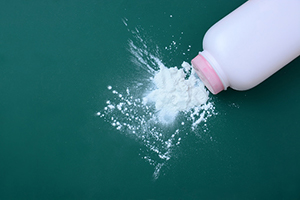As reported in JAMA by O’Brien et al, pooled data from four large U.S.-based prospective cohorts suggest the lack of a significant association between the use of powder in the genital area and an increased risk of ovarian cancer. The investigators noted that the analysis may have not been adequately powered to detect a small increase in risk.

Photo credit: Getty
As stated by the investigators, prior case-control studies have suggested an association with such powder use and increased ovarian cancer risk. Data for the current study were pooled from the Nurses’ Health Study (enrollment in 1976, follow-up 1982–2016; n = 81,869), Nurses’ Health Study II (enrollment in 1989, follow-up 2013–2017; n = 61,261), Sister Study (enrollment from 2003–2009, follow-up 2003–2017; n = 40,647), and Women’s Health Initiative Observational Study (enrollment from 1993–1998, follow-up 1993–2017; n = 73,267).
Key Findings
Overall, data were available for 252,745 women (mean age at baseline = 57 years). Of these, 38% reported themselves as “ever-users” of powder, 10% reported long-term use (≥ 20 years), and 22% reported frequent use (≥1 time per week).
During a median follow-up of 11.2 years (3.8 million person-years at risk), 2,168 women developed ovarian cancer (58 cases/100,000 person-years). There were 61 cases/100,000 person-years among ever-users of powder vs 55 cases/100,000 person-years among never-users, yielding an estimated risk difference at age 70 years of 0.09% (95% confidence interval [CI] = −0.02% to 0.19%) with an estimated hazard ratio [HR] of 1.08 (95% CI = 0.99–1.17).
Estimated hazard ratios were 1.09 (95% CI = 0.97–1.23) for frequent users vs never-users and 1.01 (95% CI = 0.82–1.25) for long-term users vs never-users.
KEY POINTS
- During a median follow-up of 11.2 years (3.8 million person-years at risk), 2,168 women developed ovarian cancer (58 cases/100,000 person-years).
- There were 61 cases/100,000 person-years among ever-users of powder vs 55 cases/100,000 person-years among never-users.
- Tests for heterogeneity were not statistically significant in subgroup analyses for 10 variables (including age, race/ethnicity, use of hormone therapy, parity, patency of reproductive tract, and hysterectomy).
Tests for heterogeneity were not statistically significant in subgroup analyses for 10 variables (including age, race/ethnicity, use of hormone therapy, parity, patency of reproductive tract, and hysterectomy). The estimated hazard ratio for association between ever use and risk among women with a patent reproductive tract was significant, at 1.13 (95% CI = 1.01–1.26); however, the test for interaction for women with vs without patent reproductive tracts (HR = 0.99, 95% CI = 0.86–1.15) was not significant (P = .15).
The investigators concluded: “In this analysis of pooled data from women in four U.S. cohorts, there was not a statistically significant association between use of powder in the genital area and incident ovarian cancer. However, the study may have been underpowered to identify a small increase in risk.”
Katie M. O’Brien, PhD, of the Epidemiology Branch, National Institute of Environmental Health Sciences, Research Triangle Park, is the corresponding author for the JAMA article.
Disclosure: The study was supported by the Intramural Research Program of the National Institutes of Health and others. For full disclosures of the study authors, visit jamanetwork.com.

